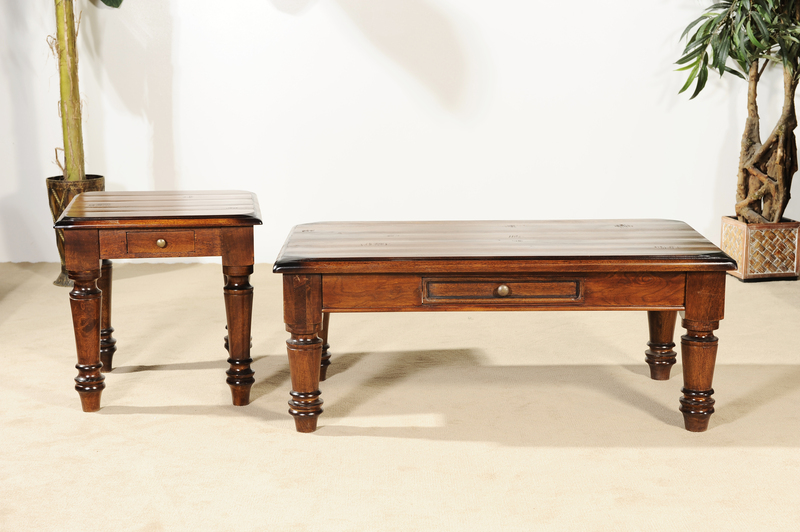Downsizing Dilemmas: How to Get Rid of Large Furniture
Decluttering your living space can be a liberating experience, but when it comes to downsizing, one of the biggest challenges lies in figuring out how to get rid of large furniture. Whether you're moving to a smaller home, embracing a minimalist lifestyle, or simply looking to refresh your interior, finding effective and ethical ways to part with bulky pieces is essential. In this comprehensive guide, we'll explore the best strategies to bid farewell to your oversized sofa, cumbersome dining table, or giant wardrobe, addressing common obstacles and providing actionable tips every step of the way.
Why Downsizing Large Furniture Can Be Challenging
Large furniture removal isn't just a logistic issue--it often comes attached with emotional and practical hurdles. Before tackling the how, let's look at the main reasons why saying goodbye to that five-seater sectional or antique armoire can be so daunting:
- Emotional attachment: Many pieces carry sentimental value or family history.
- Physical logistics: Oversized furniture may not fit easily through doorways, hallways, or down staircases.
- Limited resale value: Not all heavy furniture has significant resale appeal owing to style, wear, or sheer size.
- Environmental concerns: Dumping furniture in landfills is unsustainable and increasingly frowned upon.
- Time constraints: During a move, time is often of the essence, complicating careful decision-making.
Understanding these hurdles is the first step in finding the best solutions for disposing of large furniture when downsizing.

Evaluate Your Furniture: What Stays, What Goes?
Begin the downsizing process with a critical assessment of your home's contents. Ask yourself:
- Does it fit? Visualize your next living space. Will your current furniture suit the new dimensions and style?
- Is it needed? Do you have duplicates or items you rarely use?
- Is it in good condition? Quality, intact pieces are easier to sell or donate.
- Can it serve a new function? With creativity, some items may be repurposed for the new space.
Be honest and practical during this stage--remember, the goal of home downsizing is to create a lighter, more manageable lifestyle. Now let's focus on the various options for getting rid of large furnishings in a responsible, efficient way.
Smart Strategies for Large Furniture Removal
1. Sell Your Furniture
Selling large furniture can be a win-win, offering both extra cash and a chance to extend the life of your items.
- Online Marketplaces: Platforms like Facebook Marketplace, Craigslist, OfferUp, and even eBay (Local Pickup) are ideal for connecting with buyers nearby.
- Apps: Use specialized apps such as Letgo or Chairish for higher-end or designer items.
- Consignment Stores: They handle sales for you in exchange for a fee, perfect for quality furniture.
- Garage Sales: If you have several items, a moving or garage sale can move bulk at once.
Tip: Take clear, well-lit photos and provide accurate descriptions and measurements to attract serious buyers. Be prepared to negotiate on price or offer delivery if you have the resources.
2. Donate to Charity
If making a profit isn't your main objective, donating furniture is an excellent solution. Many charities accept gently used large furnishings and even offer free pickup, making the process painless and rewarding.
- Goodwill
- Habitat for Humanity ReStore
- The Salvation Army
- Local shelters or religious organizations
Ensure your donations are clean, functional, and free of major damage. Some organizations publish specific guidelines for acceptable items.
3. Give Away or Gift
There may be friends, family, or neighbors who could benefit from your unwanted furniture. Use social media and community boards (like Nextdoor or local Facebook groups) to advertise giveaways.
- "Curb alerts" (placing furniture on the sidewalk with a "free" sign) is common in some neighborhoods--but check local laws.
- College students or young professionals often need affordable furnishings.
- Pay it forward: If someone helps you move furniture, offer it as a thank-you.
4. Trade-In or Recycle
Furniture retailers and online platforms sometimes offer trade-in programs, especially for things like mattresses and sofas. Check if your local stores will take back old items in exchange for a discount on new purchases.
Recycling is a last resort, but a responsible one. Look for municipal bulk waste programs or recycling centers specializing in furniture components like metal, wood, or textiles.
Professional Furniture Disposal Services
Not all oversized furniture is easy to move on your own. When your sofa or entertainment center is too big or you lack the means to transport it, hiring professionals is a wise investment.
- Junk Removal Companies: Services like 1-800-GOT-JUNK? or local alternatives will pick up and dispose of large items from your home, sometimes offering sustainable disposal options.
- Donation Pickup: Many charities allow you to schedule pickups--check their availability early as slots fill up fast.
- Moving Companies: If you're already moving, ask if they will handle furniture removal for items you're leaving behind.
Remember to compare prices, check reviews, and verify a company's environmental disposal policies before booking.
How to Prepare Large Furniture for Removal
Disposing of large furniture isn't just about deciding where it goes, but also how to get it out of your space. Here are essential steps to ensure a smooth and safe transition:
1. Measure Pathways and Doorways
Before moving any bulky item, measure your doors, hallways, and stairs to ensure a clear path.
2. Disassemble When Possible
Break down beds, tables, and sectionals into manageable pieces. Retain all hardware in labeled bags for the next owner.
3. Protect Your Home
Lay down blankets or cardboard to shield floors and walls from scratches while moving large items. Enlist a friend or use lifting straps for heavy loads.
4. Clean the Furniture
Wipe and vacuum all surfaces. This is especially important if you're donating or selling--the better it looks, the faster it goes!
Common Pitfalls When Downsizing Furniture--And How to Avoid Them
- Underestimating time: Large furniture removal often takes longer than expected. Start sooner than you think!
- Overestimating value: Heavy or dated pieces might not fetch the price you expect, so stay flexible.
- Ignoring accessibility: Make sure your building, elevators, or street allows for large pick-ups.
- Forgetting paperwork: For donations or sales, request receipts and include transfer documents if needed.
- Missing utility: Consider carefully if you will truly miss the item--replacement costs can be steep if you regret letting go.
Eco-Friendly Furniture Disposal Solutions
As sustainability becomes more important, being mindful of where your old furniture ends up makes a difference. Here are eco-conscious approaches to downsizing dilemmas:
- Upcycle or repurpose: If you're crafty, transform pieces into new items--old dressers into vanities, tabletops into desks, etc.
- Donate for reuse: Giving your large items a second life keeps them out of landfills and helps those in need.
- Recycle components: Separate metal, wood, and textiles where possible for proper recycling.
- Avoid curbside dumping: Leaving furniture on the street contributes to urban waste and can result in fines.
Special Considerations: Apartments, Condos, and Gated Communities
If you live in a multi-unit or gated property, large furniture removal may require special arrangements:
- Reserve elevators/lifts: Many buildings mandate advance booking for moves.
- Check bylaws: Confirm rules around disposal, move-out times, and use of common areas.
- Coordinate with management: Alert building staff about pickup dates to avoid issues.
Tip:
Always communicate with condo boards or building managers early. This avoids last-minute headaches and ensures a smooth process.
Frequently Asked Questions (FAQ) About Getting Rid of Large Furniture
How do I get rid of a large sofa when downsizing?
First, measure the sofa and new living space, then explore options like selling it locally online, donating to charity, offering a giveaway to neighbors, or hiring a junk removal service.
Can large furniture be recycled?
Many materials used in bulky furniture--metal frames, wood, fabrics--can often be recycled at specialized centers. Contact your local municipal waste department for details.
Are there free options for furniture pick-up?
Yes, some charities offer free pick-up for donations. Be sure to call ahead and check requirements, as services vary by location and item condition.
Is it worth paying a professional for furniture removal?
If you lack help, time, or physical ability--or need same-day removal--professional services are well worth the investment. They also ensure proper disposal or donation whenever possible.
Can I disassemble oversized furniture myself?
Most items like beds, tables, and some sofas are designed for partial or full disassembly. Use manufacturer guides, keep hardware organized, and search online tutorials as needed.

Summary: Downsizing Large Furniture with Confidence
Deciding how to get rid of large furniture when downsizing doesn't have to be overwhelming. With a clear plan--starting with evaluation, followed by selling, donating, gifting, or recycling--you can ensure your heavy pieces find a worthy new home or are disposed of responsibly.
Remember to take measurements, prepare your furniture for removal, and consider eco-friendly practices for a stress-free, guilt-free transition. Every sofa, table, or wardrobe removed is a step closer to a simpler, more manageable, and more joyful living space.
Final Checklist for Downsizing Furniture
- Assess what you truly need in your new home.
- Research all available methods for furniture removal.
- Prepare and clean items prior to their next destination.
- Schedule pick-ups, sales, or donations well in advance.
- Communicate with all involved parties--buyers, movers, management, or charities.
- Document important transactions for reference and peace of mind.
Downsizing doesn't just mean leaving things behind--it's about creating space for what truly matters. With the right approach to large furniture, you're not just getting rid of the old, but making room for new beginnings.
```